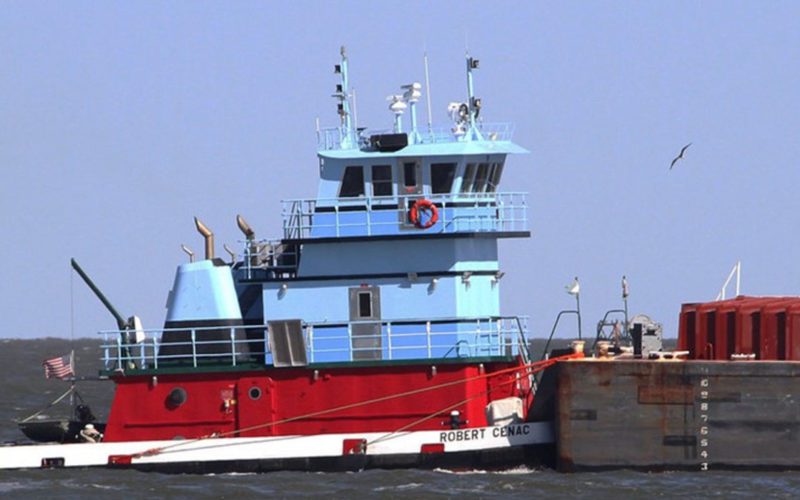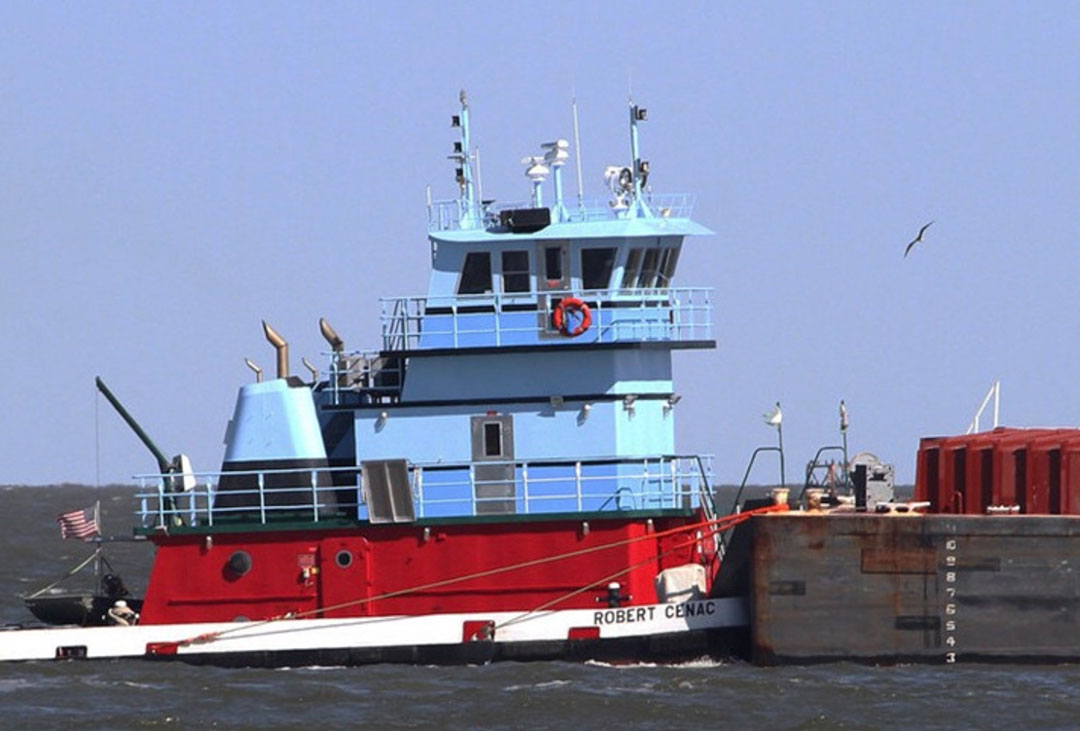
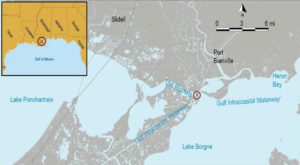
Poor communication between a towboat captain and railroad bridge tender was the primary cause of a bridge strike east of New Orleans, federal investigators determined.
Robert Cenac pushed an empty barge that struck the CSX Railway Rigolets Bridge across Lake Borgne as it swung open. The bridge sustained $1.1 million in damage from the incident, which happened on Jan. 12, 2021, at 2359. The hopper barge SH 238 required only minor repairs.
The captain and bridge tender gave differing accounts of the unfolding situation, and the National Transportation Safety Board (NTSB) could not independently verify either version. Even so, it said both parties could have done more to prevent the incident.
“This accident was an instance of poor communication,” the NTSB wrote in its accident report. “Both parties were responsible for exercising good judgment and practices, and both should have exchanged clear and unambiguous requests, orders, or direction in an effort to execute the transit safely.”
The absence of navigational lighting on the swing span of the bridge contributed to the incident, the NTSB said.
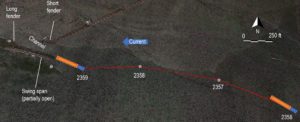
The 1,400-hp Robert Cenac and the 195-by-35-foot SH 238 approached the Rigolets Bridge from the south. The tow was en route to a dredging site near Port Bienville, Miss. The railroad bridge spans the Rigolets, a narrow waterway that connects Lake Pontchartrain and Lake Borgne near the Gulf of Mexico.
The pilot helming the tow put the engines to idle roughly 2.4 miles from the bridge while waiting for two trains to pass. He again inquired about the bridge opening after the second train cleared the span.
“Cap, where you at?” the bridge tender said, according to the pilot.
“I’m sitting here waiting on you, about 15 minutes away,” the pilot responded.
“I’m gonna get it open for you cap,” the tender said, again according to the pilot’s recollections.
The captain took over the watch at about 2345, and around that time the pilot left the wheelhouse. The captain told investigators he knew the tow was holding for the bridge to open. Minutes later — the captain was not precise on the time — he said the tender let him know the bridge was open.
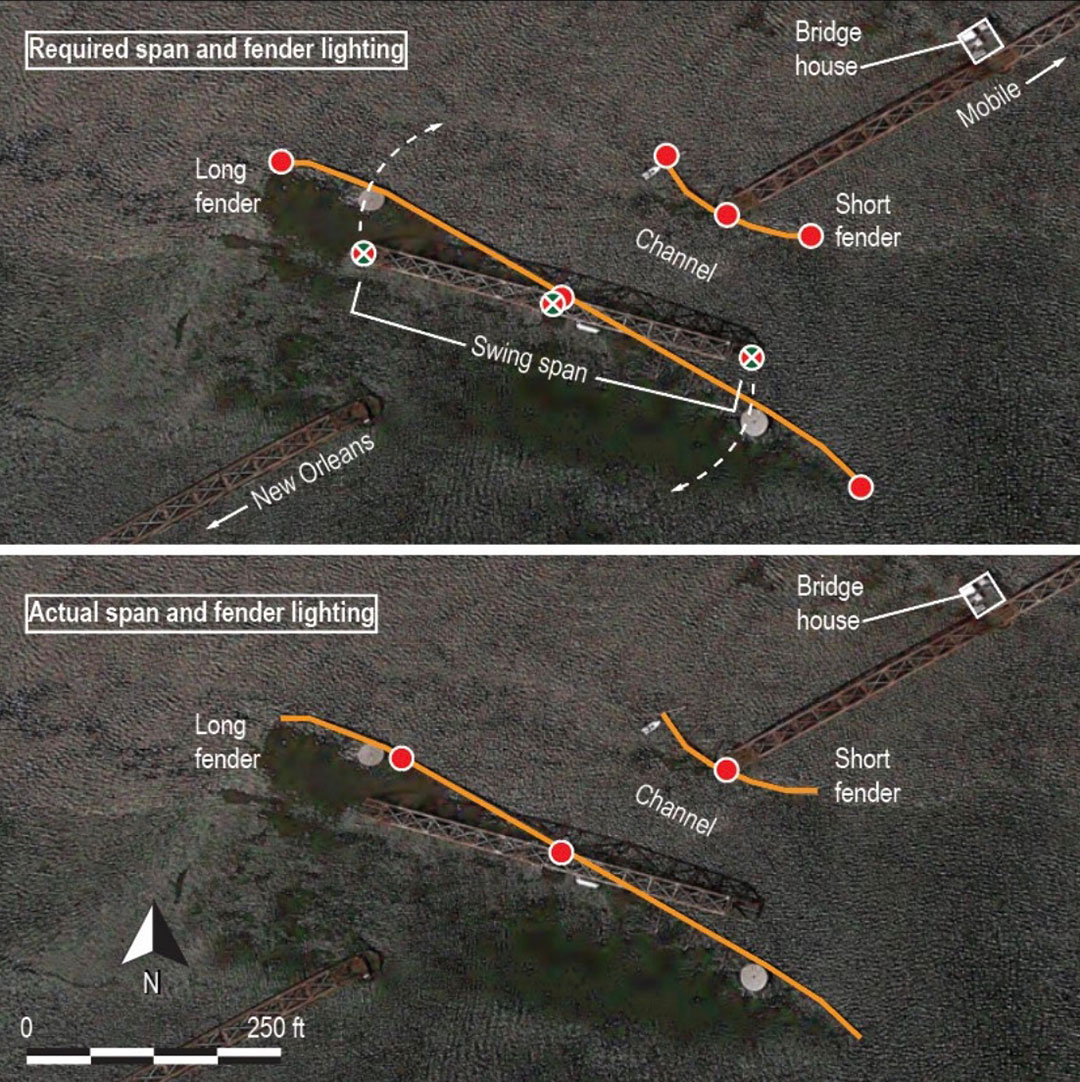
The captain lined up the tow and accounted for a westerly set from the flood current. He used the spotlight to locate the channel, which had a long center fender and shorter fender on the east side of the 153-foot navigation channel. The captain noticed the bridge was about three-quarters of the way open as the tow came within 2,000 feet, the NTSB said.
“As the tow got closer to the long fender, (the captain) saw the swing span was not fully open as he said he had been informed and was overhanging the long fender,” according to the report. “He told investigators that by the time he noticed the bridge protruding outside of the protective fender and began to back down, the tow was too close to stop, as the current set the tow toward the span.”
At 2359, the barge’s forward port side hit the south end of the open span that overhung the channel. The short and long fenders also were damaged, although the report indicated another barge hit the span only eight days earlier, making it unclear which vessels caused the damage. The earlier incident was not reported to the Coast Guard, the NTSB said.
The pilot returned to the wheelhouse after sensing the impact. He recalled the bridge tender saying over radio, “All right cap, the bridge is fully open” — suggesting he didn’t realize the tow had already hit the span.
The pilot then heard the captain respond, “Yeah, I just hit the bridge.”
The captain on Robert Cenac noticed just three lights visible on the span as the tow approached — two on the long center fender and one on the shorter eastern fender. Federal regulations require lights on swing bridges like this that clearly show, using green or red lights, whether the span is open or closed. Those lights were not present on the bridge on the night of the incident.
“Had the swing span been fitted with the required navigation lighting, the Robert Cenac captain would likely have been able to visually determine the position of the swing span throughout its opening sequence as he made his approach,” the report said.
CSX installed floodlights to better illuminate the bridge, but as of mid-January 2022 the bridge lights still did not meet federal rules.
Investigators couldn’t get to the bottom of the miscommunication about the bridge opening. The captain said he had the go-ahead before getting underway, while the bridge tender insisted he hadn’t cleared the tow to pass through the span. The tender also claimed the towboat captain came through after a crewman on the barge reported the span was open. According to the report, none of Robert Cenac’s crew said they were on the barge during the bridge strike.
There was no audio recording and no other crewmember heard the entirety of their communications, the NTSB said.
Still, the captain began his approach to the poorly lit bridge without clarity about the span’s position, the NTSB said. The bridge tender, meanwhile, should have monitored the approach and made contact over VHF radio “if he saw the bridge was not all the way open as the towboat approached.”
Al Cenac Towing of Houma, La., operates the 56.5-foot Robert Cenac. The company did not respond to an inquiry about the NTSB findings.
CSX Transportation of Jacksonville, Fla., owns the bridge over the Rigolets. The company said it “appreciates the work of the NTSB in connection with the Rigolets Pass swing bridge accident and will be reviewing the report’s analysis and conclusions.”

